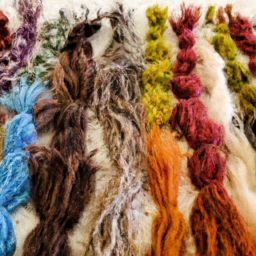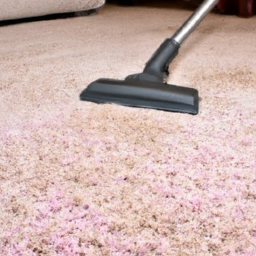
In “Understanding the Different Types of Carpet Fibers,” you will explore the fascinating world of carpet fibers and discover the key differences between them. Whether you’re considering a new carpet installation or simply want to learn more about the materials under your feet, this article will provide you with valuable insights. From plush and luxurious nylon to eco-friendly and sustainable options like wool and bamboo, there’s a wide range of carpet fibers to choose from. By the end, you’ll have a better understanding of each type and be equipped to make an informed decision when it comes to selecting the perfect carpet for your home. For more information or to consult with experts in carpet cleaning, don’t hesitate to contact “Veterans Carpet Cleaning” from Milton FL at https://veteranscarpetcleaner.com/contact-us/.
Understanding the Different Types of Carpet Fibers
Are you looking to update your floors with new carpeting? There are so many options out there, it can be overwhelming trying to decide which type of carpet fiber is right for you. Each fiber has its own unique characteristics and benefits, so it’s important to understand the differences before making a decision. In this article, we will explore the various types of carpet fibers available, their pros and cons, and factors to consider when choosing the best carpet for your home.
1. Nylon Fibers
Nylon is one of the most popular carpet fibers and for good reason. It is extremely durable and can withstand heavy foot traffic without showing signs of wear and tear. Nylon is also resistant to stains and fading, making it ideal for high-traffic areas in your home. Another advantage of nylon carpet is its wide range of colors and styles available, allowing you to find the perfect match for your decor.
2. Polyester Fibers
Polyester is another common choice for carpet fibers due to its affordability and stain resistance. It is a synthetic fiber that offers excellent color retention, making it a great option for areas with direct sunlight. Polyester is also known for its soft texture, providing a cozy and comfortable feel underfoot. However, it is not as durable as nylon and may show signs of matting and wear in high-traffic areas over time.
This image is property of images.pexels.com.
3. Olefin (Polypropylene) Fibers
Olefin, also known as polypropylene, is a synthetic fiber that is resistant to moisture, mold, and mildew. This makes it a popular choice for outdoor or basement carpets that are prone to moisture. Olefin carpeting is also highly stain-resistant, making it easy to clean and maintain. However, it is not as durable as nylon and may not be the best choice for areas with heavy foot traffic.
4. Wool Fibers
For those looking for a luxurious and environmentally friendly option, wool carpet fibers are a great choice. Wool is a natural fiber that is soft, warm, and durable. It has excellent insulation properties, providing warmth in colder months and helping to reduce energy costs. Wool is also naturally stain-resistant and flame retardant, making it a safe and durable option for your home. However, wool carpeting can be more expensive than synthetic options and may require more maintenance to keep it looking its best.
This image is property of images.pexels.com.
5. Triexta (PTT) Fibers
Triexta, also known as PTT or Sorona, is a relatively new type of carpet fiber that offers excellent stain resistance and durability. It is made from corn-based materials, making it a more sustainable and eco-friendly option compared to other synthetic fibers. Triexta carpeting is also known for its softness and resistance to fading, making it a great choice for busy households.
6. Acrylic Fibers
Acrylic is a synthetic fiber that closely resembles wool in terms of appearance and feel. It is a cost-effective alternative to wool, offering similar characteristics at a more affordable price. Acrylic carpeting is resistant to mildew, moths, and fading, making it a suitable option for areas with high humidity or direct sunlight. However, it may not be as durable as other synthetic fibers and may be prone to pilling over time.
This image is property of images.pexels.com.
7. Blended Fibers
Blended carpet fibers are a combination of two or more different types of fibers. This allows manufacturers to take advantage of the unique qualities of each fiber and create a carpet that offers the best of both worlds. For example, a blend of nylon and polyester fibers may provide the durability of nylon with the softness of polyester. Blended fibers can be a great option for those who want a balance of performance and comfort.
8. Natural vs. Synthetic Fibers
When choosing carpet fibers, you will also need to decide between natural and synthetic options. Natural fibers, such as wool, sisal, and jute, are derived from plants or animals. They offer a luxurious feel and are often more environmentally friendly. Synthetic fibers, on the other hand, are man-made and include materials like nylon, polyester, and olefin. They are typically more affordable, durable, and stain-resistant. The choice between natural and synthetic fibers will depend on your budget, sustainability preferences, and the specific needs of your home.
9. Factors to Consider When Choosing Carpet Fibers
When selecting carpet fibers, there are several factors you should consider:
-
Durability: Evaluate the level of foot traffic in the area where the carpet will be installed and choose a fiber that can withstand the wear and tear.
-
Stain Resistance: Consider the likelihood of spills and stains in the area. Opt for a fiber that is stain-resistant or easy to clean.
-
Allergies: If you or any family members have allergies, consider choosing hypoallergenic carpet fibers that are resistant to allergens and dust mites.
-
Budget: Determine your budget and find a carpet fiber that fits within your price range.
-
Maintenance: Consider the level of maintenance and care required for each type of carpet fiber. Some fibers may require more frequent cleaning or professional maintenance.
10. Care and Maintenance of Carpet Fibers
To keep your carpets looking their best, regular care and maintenance are essential. Here are some tips for caring for different types of carpet fibers:
- Vacuum regularly to remove dirt, dust, and debris from the carpet fibers. Aim to vacuum at least once a week or more frequently in high-traffic areas.
- Clean spills immediately to prevent stains from setting in. Blot the spill with a clean cloth or paper towel and avoid rubbing or scrubbing, as this can push the stain deeper into the carpet.
- Use a carpet cleaner specifically designed for your carpet fiber type for deep cleaning. Follow the manufacturer’s instructions and test a small, inconspicuous area first.
- Consider professional carpet cleaning every 12 to 18 months to remove deep-seated dirt and stains.
By Understanding the Different Types of Carpet Fibers and their characteristics, you can make an informed decision when selecting the right carpet for your home. Whether you prioritize durability, comfort, sustainability, or affordability, there is a carpet fiber that will meet your needs. Remember to consider factors such as foot traffic, stain resistance, allergies, budget, and maintenance requirements before making your final choice. With proper care and maintenance, your carpets will continue to enhance the beauty and comfort of your home for years to come.
Our Services

Get In Touch
Professional cleaning of carpet and tile
continue reading
Related Posts
Looking for top-rated carpet cleaning near Berrydale FL? Veterans Carpet Cleaning offers exceptional service and expertise to transform your carpets. Visit veteranscarpetcleaner.com for more info.
Looking for top-notch carpet cleaning in Holley FL? Veterans Carpet Cleaner guarantees fresh, pristine carpets with their expertise and state-of-the-art equipment. Say goodbye to unsightly stains and hello to a cleaner, healthier home environment. Visit their website for exceptional services.
Looking for professional carpet cleaning services in Milton FL? Our experts at Veterans Carpet Cleaning Services will have your carpets looking brand new in no time. Say goodbye to stains and hello to fresh, clean carpets.










